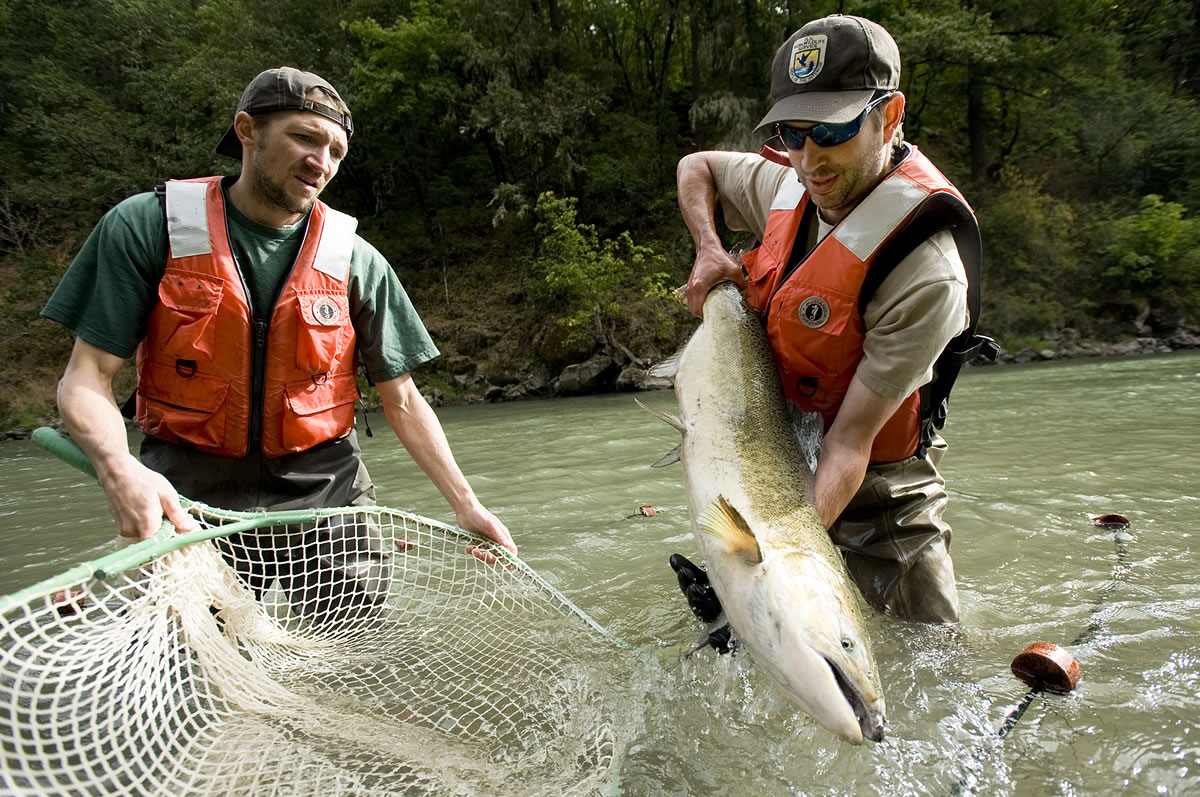The Pacific Fishery Management Council will consider adopting the draft fishery ecosystem plan on April 9. The entire council meeting is scheduled for April 5-11 at the Sheraton Portland Airport Hotel, 8235 N.E. Airport Way in Portland.
To review the draft plan, visit Pacific Fishery Management Council.
A draft ecological plan now under review could mark a subtle but significant shift in the way policymakers manage West Coast fisheries.
The Fisheries Ecosystem Plan also highlights an often overlooked path to boosting the populations of salmon and other marine wildlife: protecting the small forage fish they eat.
The initiative reflects a move toward more broad ecosystem-based management, rather than the species-by-species approach that characterized previous policy, said Tim Roth, a deputy project leader for the federal Columbia River Fisheries Program in Vancouver. The goal, he said, is a better understanding and better management of those systems — a result that would mean better fish runs on the Columbia River and other Northwest waterways.
Managing on an ecosystem basis is an objective that’s come along over time, but it’s never been put into writing in the way the plan on the table now does, Roth said. Previous efforts haven’t taken the same big-picture view, he added.
“As they were developed, they didn’t really look across the broad complexities of species and how they interacted,” said Roth, who works for the U.S. Fish and Wildlife Service and is also a non-voting service representative on the Pacific Fishery Management Council.
The Fisheries Management Plan is set to come before the council at its April meeting in Portland. Roth noted the plan, if approved, is not prescriptive. That is, it would not have direct regulatory authority.
Advocates have welcomed the plan and its broad approach to Northwest ecosystems. The Pew Charitable Trusts’ environmental arm has recently pushed to raise awareness of forage fish and their importance to the marine food web.
“What really fuels all of this are these little … fish that never get their day in the sun,” said Paul Shively, a campaign manager with the Pew Trusts.
Forage fish — small schooling species such as sardines, saury and smelt — provide a crucial protein source for larger fish and other animals in the Pacific. But some of those forage species are largely unmanaged, leaving them vulnerable to unregulated fishing, according to the Pew Trusts. Washington has been a leader in recognizing the issue, Shively said. He called the fishery management council’s draft plan “rather visionary.”
In November, leaders with the Northwest Power and Conservation Council also sent a letter to the Pacific Fishery Management Council underscoring the importance of forage fish to the marine ecosystem.
Roth said the plan may lead to more conservative management of West Coast fisheries, at least initially. But that could change as managers learn more about the interactions of interdependent marine species, he added.
“It might mean lower catches in the near term until we better understand these relationships,” Roth said.
The Pacific Fishery Management Council is due to adopt its plan on April 9.
Eric Florip: 360-735-4541; http://twitter.com/col_enviro; eric.florip@columbian.com.




